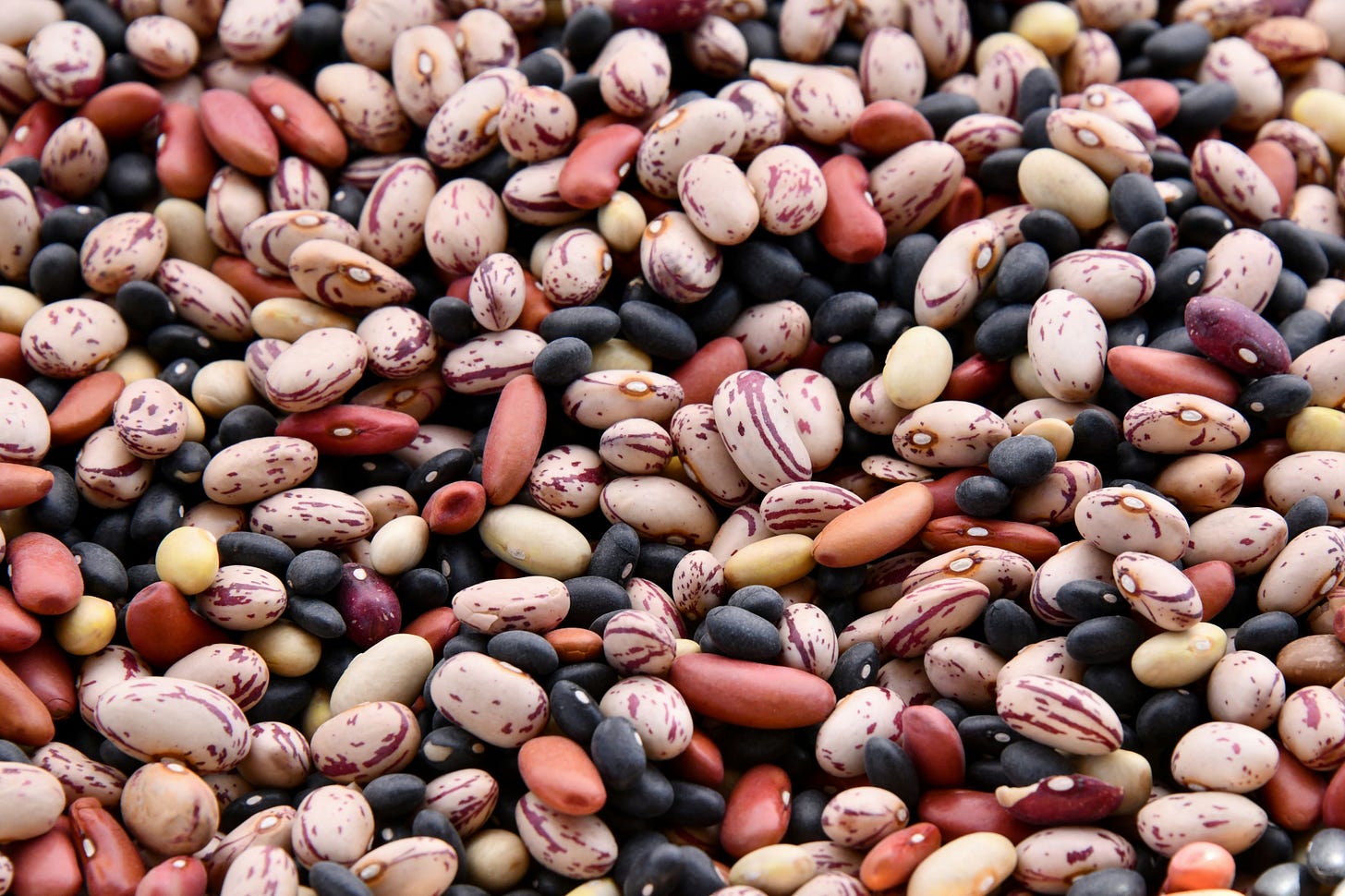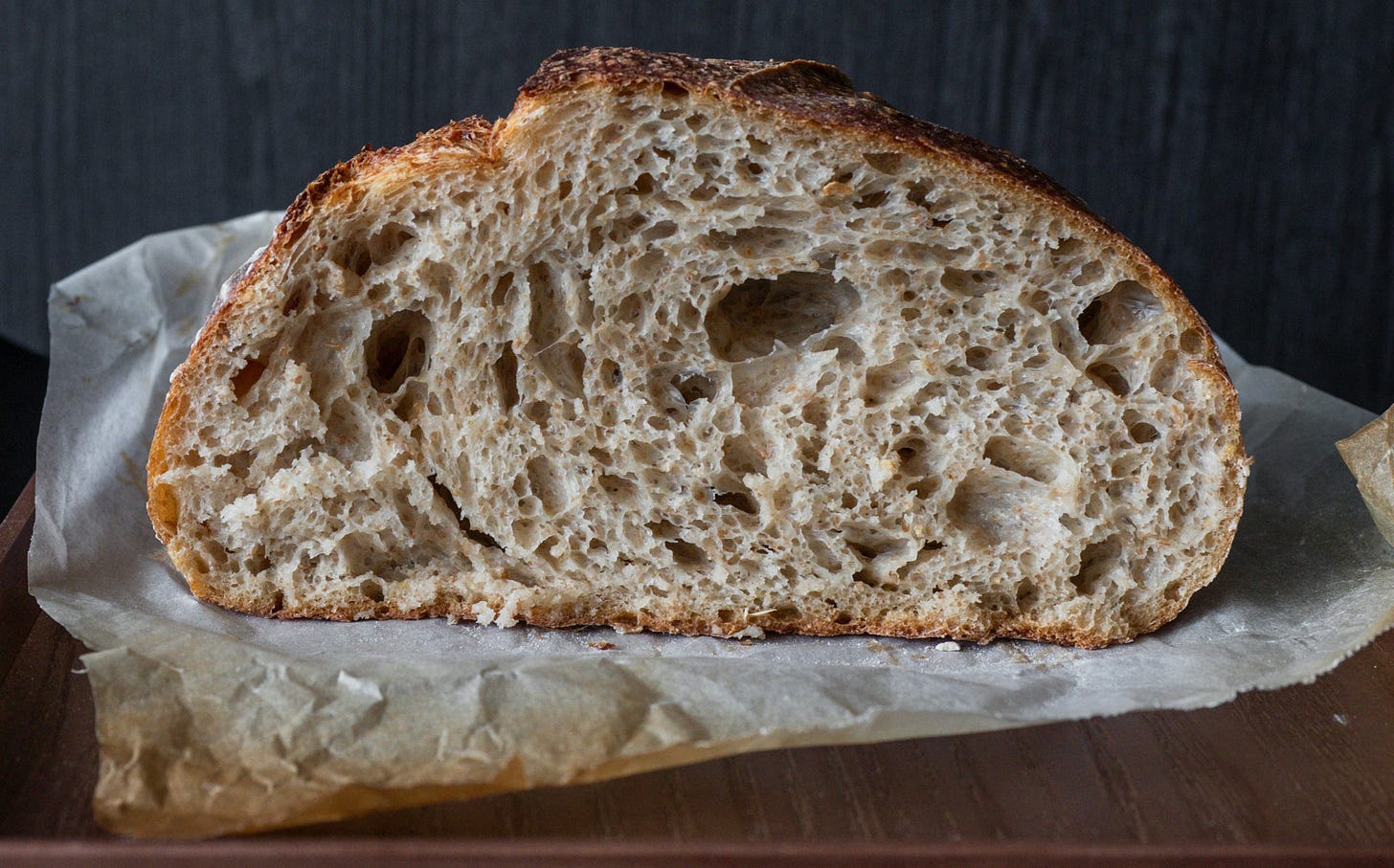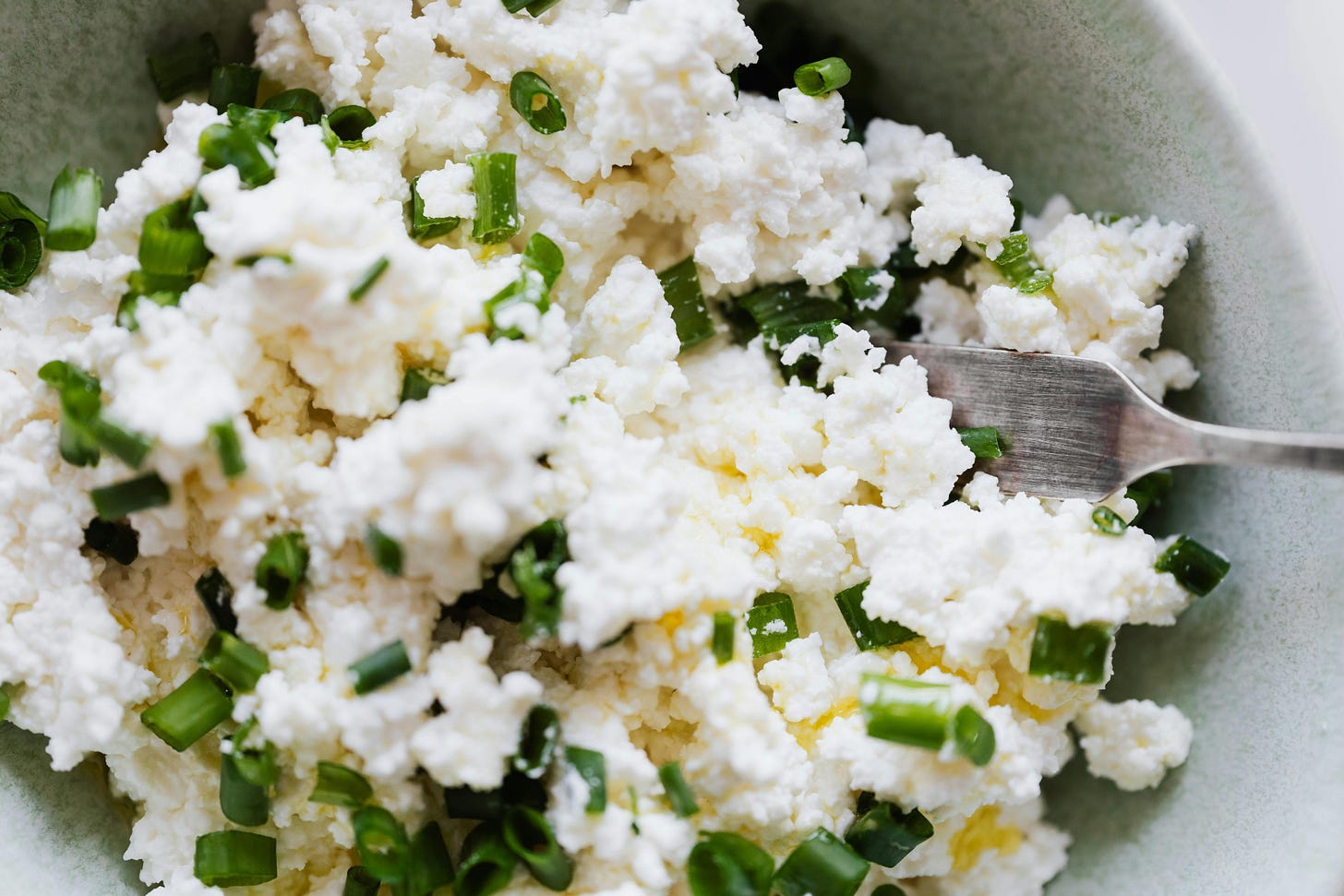How to Get More Protein When You're Gluten-Free
Everyone's buzzing about this nutrient lately—and for good reason.
Protein is having a real moment these days. If you’re anything like me, then you’ve probably seen lots of TikToks and read plenty of articles about the benefits of protein, why you should up your intake of this nutrient, and how to add more protein to your meals.
But how much protein do you really need—and how do you make sure you’re getting the right amount if you’re adhering to a gluten-free lifestyle? I chatted with Jamie Baham, RDN, LD, a cancer prevention dietitian and the owner of Ladybug Nutrition, to find out.
Table of contents:

What is protein?
According to Harvard T.H. Chan’s The Nutrition Source, protein is an essential macronutrient found in many parts of the body (including muscle, bone, skin, and hair). It’s also found in a variety of animal and plant foods. Baham shares that the word protein comes from the Greek word “proteios,” which means primary.
“Protein is composed of amino acids joined together by peptide bonds that must be broken down by enzymes to release their full power,” she explains. “You can’t have lean muscle, beautiful skin, or build healthy bones without protein.”
“Protein needs vary depending on the goals and lifestyle of the individual.” - Jamie Baham, RDN, LD, a cancer prevention dietitian and the owner of Ladybug Nutrition
How much protein should you aim for daily?
“Protein needs vary depending on the goals and lifestyle of the individual,” notes Baham. She gives this analogy: “Think of it like gas in your car—the amount of fuel you need to get from one destination to the other depends on what you drive, how fast you’re going, and how often you hit the brakes. Similarly, protein needs will vary based on body size, activity level, and health status.”
According to Baham, the Recommended Daily Allowance for a healthy adult with minimal physical activity is .8 grams of protein per kilogram of body weight. As outlined by The Nutrition Source, this amounts to a little over 7 grams of protein for every 20 pounds of body weight.
What this looks like:
For a 140-pound person: about 50 grams of protein a day
For a 200-pound person: about 70 grams of protein a day
“This recommendation increases for individuals engaging in strenuous exercise, like weightlifting, or those who are ill or healing from injuries such as burns,” says Baham. “In those cases protein becomes even more essential for tissue healing (repair) and recovery.”
She explains that without enough protein, healing will slow down—this is something she often observes in cancer patients. “When protein intake is inadequate, their recovery is prolonged, their fatigue is increased, and their outcomes are generally poorer.”
You shouldn’t worry too much about hitting an exact amount of protein daily, though. Per the Nutrition Source, the National Academy of Medicine offers a pretty big range for acceptable protein intake, stating that it can make up anywhere from 10% to 35% of your daily calories.
What’s more, the most recent Dietary Guidelines for Americans (2020 - 2025) stresses the importance of choosing healthier sources of protein rather than focusing on trying to eat a specific amount each day.
The bottom line: How much protein you need varies based on how much you exercise, your age, any health conditions, and your overall dietary habits. A registered dietitian can help you figure out how much protein you should be eating to meet your individual health goals.

Why might the gluten-free diet be lacking in protein?
ICYMI, gluten is a protein. When you remove gluten from your diet, you take away one source of protein. “Even though gluten-free flours help those on gluten-free diets avoid wheat, they are also known to be higher in carbohydrate and lower in protein,” says Baham.
Due do their abundance and low cost, some of the most common wheat flour substitutes are rice and corn flours that are combined with starches like potato and cassava—these are lower in protein than wheat flour, says Baham.
In fact, a recent study published in Plant Foods for Human Nutrition notes that gluten-free products in the US “contained significantly less protein and more sugar and calories.”
What are the best high protein gluten-free foods?
There are many naturally gluten-free foods you can eat to get your fill of protein. According to Healthline, some of the best naturally gluten-free animal and plant sources of protein include:
Peanuts (18.9 grams per cup)
Lentils (17.9 grams per cup)
Pinto beans (15.4 grams per cup)
Navy beans (15 grams per cup)
Kidney beans (15.3 grams per cup)
Black beans (15.2 grams per cup)
Chickpeas (14.5 grams per cup)
Peas (8.58 grams per cup)
Pumpkin seeds (10 grams per 1/4 cup)
Almonds (7 grams per 1/4 cup)
Pistachios (6 grams per 1/4 cup)
Cashews (5 grams per 1/4 cup)
Hazelnuts (5 grams per 1/4 cup)
Brazil nuts (4.75 grams per 1/4 cup)
Walnuts (4.5 grams per 1/4 cup)
Pine nuts (4.5 grams per 1/4 cup)
Skinless chicken (28 grams per 3 ounces)
Steak (26 grams per 3 ounces)
Roasted turkey (25 grams per 3 ounces)
Lamb (23 grams per 3 ounces)
Pork (22 grams per 3 ounces)
Salmon (22 grams per 3 ounces)
Tuna (22 grams per 3 ounces)
Shrimp (20 grams per 3 ounces)
Lobster (16 grams per 3 ounces)
Scallops (14 grams per 3 ounces)
Eggs (6 grams per egg)
Greek yogurt (18 grams per 6 ounces)
Cottage cheese (14 grams per 4 ounces)
Non-fat yogurt (11 grams per cup)
Skim milk (8 grams per cup)
Part-skim mozzarella (7 grams per ounce)
Tempeh (16 to 22 grams per 4 ounces)
Soy beans (11 to 13 grams per 1/2 cup)
Tofu (6 to 13 grams per 3 ounces)
Soy milk (3 to 10 grams per cup)
Edamame (6 grams per 2/3 cup)
Per Healthline, some sources of protein you’ll want to double-check include processed meats, ground meats, meat substitutes, proteins with sauces on them, and ready-to-eat proteins (such as frozen meals) as these could contain gluten.
Stay away from any proteins that are breaded or contain soy sauce in the marinade since these will have gluten. Seitan is also a gluten-filled protein you’ll want to avoid.

What are some other ways to get more protein if you’re gluten-free?
“Switching to a gluten-free lifestyle can be a challenge, but thankfully there are a lot more gluten-free food items available than ever before,” says Baham. She points to dairy products like Greek yogurt and cottage cheese that are higher in protein.
“Greek yogurt has so many excellent protein opportunities from sweet dishes like frozen yogurt to savory protein additions like a low-fat substitute for sour cream,” says Baham. “It can also add a creamy texture to soup in place of heavy cream.”
Baham adds that cottage cheese is also making a comeback lately—and for good reason. “It’s a rich protein source that can be blended into a smoother, more appealing texture for dips, spreads, or even high-protein ice cream,” she says. (This is my favorite cottage cheese.)
Looking to up the protein content of your baked goods, meanwhile? Baham is a fan of lupin flour. “This is an excellent protein source with a texture and emulsifying quality that make it a great substitute in baked goods,” she says. “It also has a softer crumb compared to pea and soy proteins.”
Have you struggled to get protein on the gluten-free diet? What are your favorite gluten-free sources of protein? Drop a comment and let me know!
Sources
Jamie Baham, RDN, LD, a cancer prevention dietitian and the owner of Ladybug Nutrition
The Nutrition Source. Protein. https://nutritionsource.hsph.harvard.edu/what-should-you-eat/protein/
Food & Function. 2016 Mar;7(3):1251-65. “Dietary protein intake and human health.” https://pubmed.ncbi.nlm.nih.gov/26797090/
Harvard Health Publishing. How much protein do you need every day? https://www.health.harvard.edu/blog/how-much-protein-do-you-need-every-day-201506188096
Foods. 2021, 10(9). High Protein Substitutes for Gluten in Gluten-Free Bread. https://www.mdpi.com/2304-8158/10/9/1997
Plant Foods for Human Nutrition. Volume 80, article number 8, (2025). “Gluten-free Diet, a Friend or a Foe, an American Perspective.” https://link.springer.com/article/10.1007/s11130-024-01264-w
United States Department of Agriculture. Dietary Guidelines for Americans (2020 - 2025). https://www.dietaryguidelines.gov/sites/default/files/2020-12/Dietary_Guidelines_for_Americans_2020-2025.pdf
Healthline. Foods You Can Eat on a Gluten-Free Diet. https://www.healthline.com/nutrition/foods-you-can-eat-on-a-gluten-free-diet
Healthline. 9 Healthy Beans and Legumes You Should Try. https://www.healthline.com/nutrition/healthiest-beans-legumes
Healthline. 9 High Protein Nuts and Seeds to Eat. https://www.healthline.com/nutrition/high-protein-nuts
Today’s Dietitian. Protein Content of Foods. https://www.todaysdietitian.com/pdf/webinars/ProteinContentofFoods.pdf
UCSF Health. Soy Protein Content of Foods. https://www.ucsfhealth.org/education/soy-protein-content-of-foods
Disclaimer: If you click on a link, I may get a small commission. This helps support this newsletter so I can keep writing it.



So glad to see you cover this, Christina!
Great post, thank you. I've been actively focusing on improving my protein intake. Its harder than it seems 😂
As someone who prefers gluttej free food, I found this article really useful— thank you